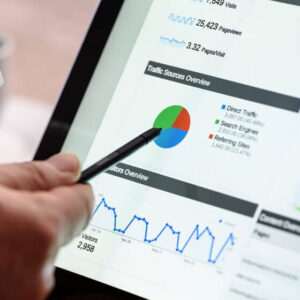Unless you’ve heard the term before, the words website conversion funnel may be utterly baffling to you. However, understanding this term and being able to apply what you’ve learnt to your website could be well worth doing, as it could make your website far more profitable.
So, what is a website conversion funnel?
A conversion or sales funnel is designed to turn visitors to your website into sales, to nudge visitors into making a purchase rather than clicking away. A properly optimised conversion funnel can also turn visitors into leads, which means users who are very likely to make a purchase in the future, after a little more ‘nurturing’ from your sales team. You can even create funnels which encourage customers who have already purchased to make even more purchases, or to engage with your brand in more ways.
You should look at the funnel as more of a pathway or a set of processes, guiding your visitors through the steps necessary to do what you want them to. The customer may not be aware that they are moving through the steps of your pathway, and this is how it should be.
Steps to create your own website pathways
The first thing to do is to decide what you want your visitors to do. If you don’t have a clear idea of where you want them to end up, you won’t be able to guide them there. The next step is to map out the customer journey and the measures you’ll take at each stage to move things along.
So for example, if you want to turn your website visitors into leads, your website conversion funnel may look like this:
- A call to action (CTA) which gets the visitor onto your page in the first place
- A landing page which piques their interest, encourages them to stay and moves them smoothly onto another part of your website
- A form with which to download a free guide, get a special offer or another incentive to sign up, which gets their details onto your email list
- A thank-you page or email which cements your new relationship and keeps the lines of communication open
- A personalised confirmation email which furthers the relationship and perhaps offers a follow-up offer
If the final step is repeated, regular contact maintained and the lead ‘nurtured’, the visitors should hopefully become a customer making purchases with your business. The genius of the website conversion funnel is that most of these steps can be set up and automated in advance, with the more time-intensive communication happening only once the visitor has become a lead.
Creating a sales funnel is a similar process, with steps that can be set up in advance. However, the steps themselves will be different, as there will be more focus on the products themselves, the offers and impulses which encourage us to buy and the user-friendliness and speed of the e-commerce process.
Have you had any luck creating conversion or sales funnels on your own website? If so, what advice could you offer to conversion novices? Please feel free to share your thoughts.








